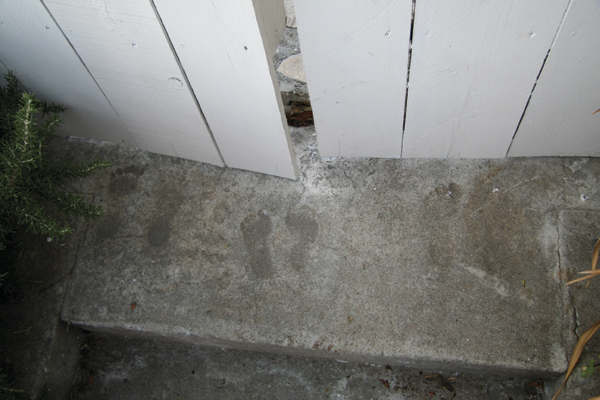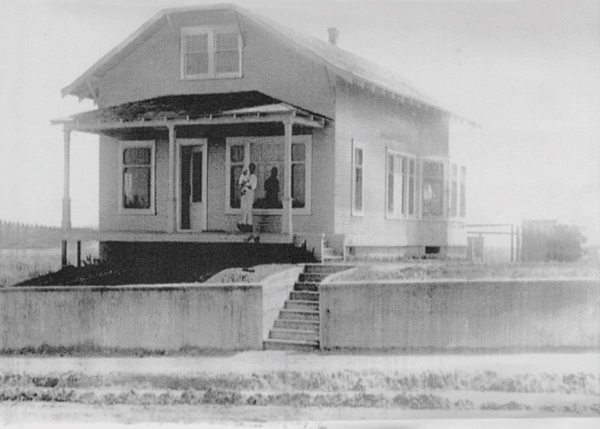|
Washington Didn't Sleep Here,
but someone did
By Janet O'Dea & Allen A. Hazard
There are many fascinating aspects to appreciating older homes. It is thrilling to be able to recognize the style of architecture or find intact character-defining features. For some, learning about the person who had the house built, or who owned it through the years might be even more endearing.
Gaining perspective and understanding of the people who shaped the history of our city and how that contributed to our state and national history is something to behold. These touchstones to our past occurred in what we currently consider San Diego's older housing stock as our region of the country was being shaped.
Finding out information about the original owner of your own house opens up the imagination and can profoundly connect you to its past and to the broader American experience. Imagine discovering that a former resident of your house was connected to a civil war widow. Knowing who lived in your house, their occupation or their contributions to the community can connect you in a meaningful way to those former owners.
Historic designation has several criteria it can meet, one of them, Criterion B, is defined as: identified with persons or events significant in local, state or national history. Recently, the City of San Diego has started working on a Historic District policy that is largely focused on the architectural integrity of a building. While the ink hasn't dried on this policy the Historical Resources Board has an opportunity to include provisions to encourage more information covered under Criterion B by examining the past owners and resident information.

A century-old relic: footprints in concrete
|

The Fuller residence, c. 1910.
|
Along with the architecture, architect and builder history, the narrative of past residents adds depth to the story of your home. By simply knowing about the deeds or misdeeds of past residents it can instill greater community interest and may even form an emotional connection to the building itself. This association, interest and connection may be the difference between saving or losing the building someday.
While it can be difficult to find any reasonable amount of information about a former resident, the search can be very rewarding. Occasionally, when researching the history of your house you can strike gold and find a relative of a former owner, a document or other evidence that provides some insight into the personality and character of the person or the struggles they endured in their lives.
My neighbors are one of the lucky ones. They have several vintage photos of their 1910 Dutch Colonial house being built. They also have photos of the first owners, Eugene and Caroline Fuller. Mr. Fuller was a member of the International Workers of the World or Wobblies, a radical worker's party of the early 20th century. It appears that Fuller began to build the house in 1908 based on a handshake with realtor Percy Goodwin who sold the lot since the deed was not recorded until the next year.
Fuller had several occupations; he worked as a carpenter in 1912, and machinist and mechanical engineer for many years thereafter. In 1927, the couple's son joined the work force and was a clerk for the Southern Electric Company. After the death of Eugene Fuller in 1928, Caroline remained in the home until 1937 as a widow living with her son and his wife.
Physical reminders of the Fuller family are found in the back of the house. Footprints of their young children still mark the concrete of the back stoop from 100 years ago; the family dog also contributed a paw print. Doesn't having something documented on the history of the owner/builder make this house more interesting, and provide meaning to the old photos and concrete footprints? Today, the current owners have a unique sense of their part in both the future and in the past of their home as they build their own memories there.
If you don't already have your home's history, and your interest has been piqued, begin by looking at the old title records. From there you can search websites such as www.rootsweb.ancestry.com and visit the California Room at the San Diego Public Library downtown to get started. SOHO provides a step-by-step research guide online as well.
Projects for young people abound when they live in an old house; resident history might be a project to work on before students go back to school. What they find may educate the entire family, besides learning some new/old research techniques that existed before Google. Keeping this information with the building will serve generations to come.
If you already have the history on your house then you probably understand how the resident history contributes to the story. We hope that by digging a bit deeper for owner and resident information of our older building stock that an even greater appreciation for those who contributed to our San Diego heritage will emerge. The simple association of knowing about past owner history will garner a greater force to protect and preserve the building, should it became challenged, and that is significant for all of us.
|
MORE FROM THIS ISSUE
From the Editor
2008 Most Endangered List of Historic Resources
Character Matters
Smart Growth - or is it?
The Impact of Historic Districts
Washington Didn't Sleep Here
How to Research Your House
Preserving Community Character
Behind the Tuscany Craze
2008 People In Preservation Award Winners
Preservation Community
Reflections
Annual Financial Report
Book Review - Working Windows
Sherlock Homes
Speakers Bureau Forming
Lost San Diego
Strength in Numbers
Advertisements
DOWNLOAD full magazine as pdf (16mb)
|





